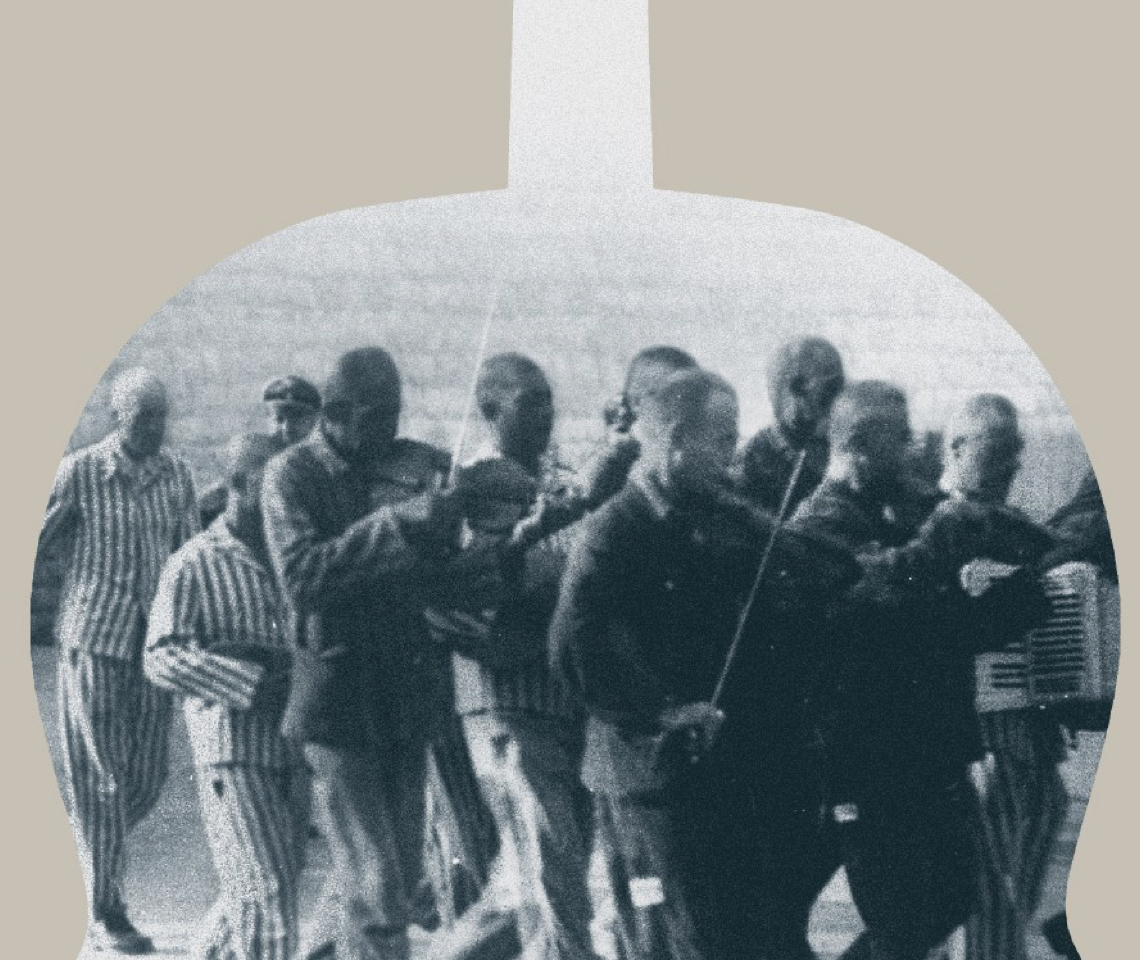
INDOOR SPACES
In indoor spaces, music is most often played spontaneously and used as a tool of artistic and spiritual resistance. Alongside the official orchestras, many small instrumental ensembles were born for these activities, as well as choirs. Their repertoires are more committed: political, patriotic or religious songs, or even diverted songs, whose words denounce the conditions of survival or the brutality of certain kapos.
When it is clandestine, the music that resonates in these small groups is sung in a low voice or simply on paper. But artistic and musical activities are also partly authorized by the SS administration or by block leaders. Organized in the evening or on Sundays, in blocks or in other buildings, they limit the risks of uprisings and distract the few privileged inmates who can attend.
CONCERTS IN THE PRISON BLOCKS
In the absence of the SS, the supervision of detainees is entrusted to the kapos and the «block deans», the Blockältesten. They are the ones who allow concerts inside the blocks between the evening call and the lights out.
For lack of scores, the repertoire is sung or played mainly from memory: traditional or folkloric songs from various countries, songs in vogue, excerpts from cabarets, hymns from the camps.
Focus – Resistance music
In the camps, one of the functions of music is to promote «resistance», that is to say the maintenance of the physical and psychic integrity of the individual. The maintenance of a cultural or artistic activity at all costs is therefore of particular importance. Spontaneous musical activities mobilize memory, creativity, they allow inmates to federate during a concert. Many Survivors testified to the regenerating power of music heard on that occasion.
Credit: Peter Edel, Cabaret-Récitation – January 1944, Sachsenhausen camp. © Gedenkstätte und Museum Sachsenhausen
Music: Jan Vala, Kartoszki! , 1942
1970 Record (1’25)
Alexander Kulisiewicz, voice and guitar
Krzystof Kulisiewicz private collection


